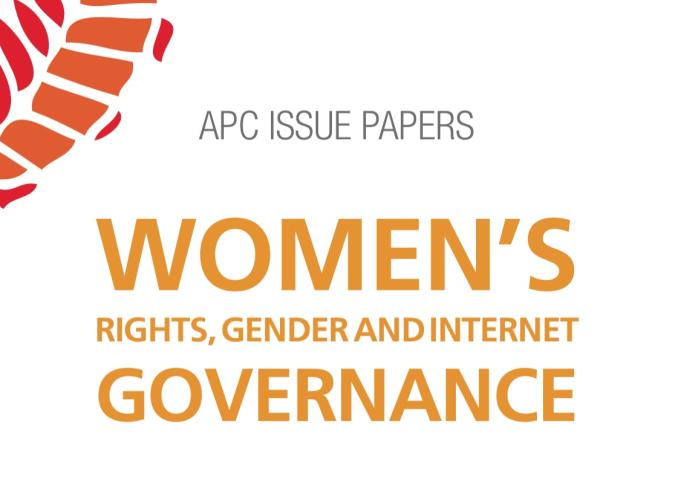
This issue paper addresses the degree to which gender and women’s rights feature in Internet governance, in multiple interconnected ways including, but certainly not limited to, access, content and representation. Gender and women’s rights occupy a largely rhetorical role in today’s discussion of Internet governance.
When speaking of access, there is a noticeable inverse proportionality in the movement against the digital divide. Often, especially in countries with pronounced gender discrimination, as the overall percentage of men with access grows, the percentage of women without access or with limited access remains steady, thereby increasing the gender imbalance. And often there is a direct proportionality between increased access for women and violence against women online.
On representation, an issue that has been very important in civil society and the private sector, there is recognition of the need for more women in leadership, more women on panels and more women involved in agenda setting. Civil society focuses largely on bringing women and women’s topics to the table, while the private sector has placed a premium on developing the capacity of girls and women for leadership in industry and representation as experts on mainstream topics. To a degree there is an improvement. One does see more women participating in the process of Internet governance, although meetings that are not specifically about women’s issues still see only token participation at leadership levels.
The IGF Gender Report Card discussed below highlights some of these trends. Dealing with women’s issues as specific topics in mainstream discussions of Internet governance is still the exception. One has to search far and wide to find substantive outcomes that relate to gender, women’s rights and the governance of the Internet. Many governments do, however, include targets in all of their resolutions, although questions remain about the degree to which these resolutions have any effect on the status of women on the Internet.
Discussion of gender in Internet governance often occurs as a set of stand-alone topics: There are not enough women on the board! Women are subjected to violence online! Women’s lives as presented online are minimised, stigmatised and fetishised! Rarely are these issues discussed in terms of their intersections and their interrelated nature. It is often hard enough to get the stand-alone issues on the agenda. More involved topics are often shunned as being too complex and too difficult to understand. Even more rare are the occasions when issues are discussed in terms of the intersection of gender issues with other forms of social disadvantage, discrimination, and oppression, e.g. race, national status, age, or hetero and cis normativity. While this issue paper focuses on individual issues in gender and women’s rights as related to Internet governance, the intersectionality of the issues needs to be kept in mind.
As human beings, we don’t have one-dimensional identities – we’re all a combination of biological, social and cultural categories. We’re living intersections, we’re multi-dimensional. And so are the issues affecting us.
So when we are designing a technology, a tool, a policy to sort out an issue emerging in any of the domains constructing our lives – politics, health care, security, labor, property, taxes, education, environment, media – adopting an intersectional perspective is greatly beneficial.
This issue paper is part of the APC “End violence: Women’s rights and safety online” project funded by the Dutch Ministry of Foreign Affairs (DGIS).